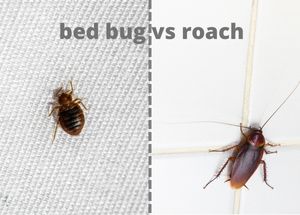When you share your home with a tiny invader, you might wonder whether it is a bed bug vs a roach. Though they are both a nuisance, it’s essential to know your enemy to understand what you can do to get rid of it. Here is my guide on all the details of these insects’ appearances, lifecycles, and the dangers they bear. Read on to identify these pests correctly and find the solution on time.
[wpsm_titlebox title=”Bed Bug vs Roach” style=”main”]
- Bed bugs are small, parasitic insects that feed on human blood, while roaches are larger, scavenging insects that are attracted to food and garbage.
- Bed bugs are typically found in mattresses and bedding, while roaches are often found in kitchens and bathrooms.
- Bed bugs are reddish-brown in color and have a flattened, oval-shaped body, while roaches are dark brown or black in color and have a long, narrow body.
[/wpsm_titlebox]
Guide on Cockroach vs Bed Bug
If you find cockroaches that look like bed bugs and are in doubt about which pest you are dealing with, here is a quick guide:
- Bed bugs feed on human blood, while roaches are omnivores and rarely bite;
- Roaches are larger than bed bugs.
- Cockroaches are cylindrical; bed bugs are oval.
- Roaches’ antennae are longer.
What is a bed bug?
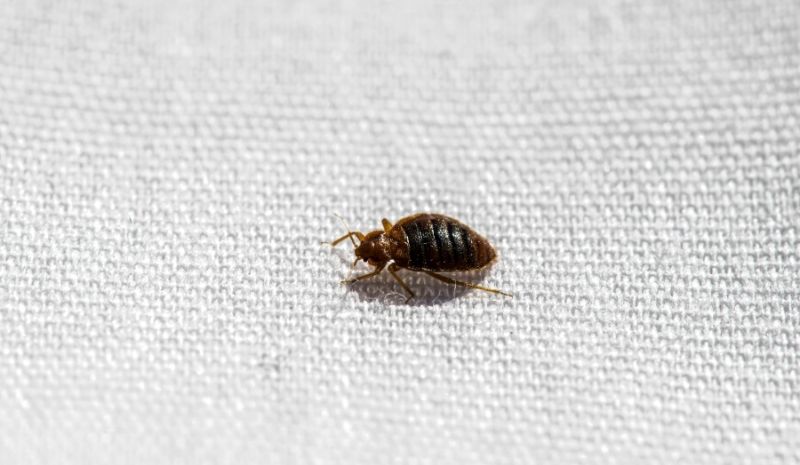
These insects don’t care about your home being spotless or dirty. They only need a safe hiding place and a warm-blooded host. Learn how to identify whether the pest you have in your house is a bed bug.
Appearance
Bed bugs are little, blood-sucking pests with reddish-brown coloring. They can’t fly since they have no wings. Adult species’ bodies are flat, about the size of an apple seed. When they feed, their bodies increase and gain a reddish hue.
Habitat
Though these pests won’t fly around your living place, they can swiftly move over walls, floors, and ceilings. They prefer to hide in the crevices and cracks of beds, bed frames, box springs, headboards, and other objects located in a bedroom. These little vampires come out at night to feed on humans.
You face the risk of bringing bedbugs to your home if you spend time in hotels, homeless shelters, hospitals, etc. They can enter your home undetected on clothing, in luggage, through used beds or couches, etc.
Lifecycle
Little bedbugs or nymphs shed their skin five times before they reach maturity. Each time, they require blood for successful shedding. If the conditions in your home are favorable, the pests entirely develop in a month. Females usually produce hundreds of eggs during their lifetime, and each egg is hardly noticeable, nearly the dot-size. On average, they produce three or more new generations per year.
Danger
Since bed bugs feed on humans, which is their favorite host, they leave bites on the skin. These bites come off without treatment for several weeks. Though bed bugs don’t spread diseases, they can provoke an allergic reaction in some people. A severe allergic reaction includes constant itching, blisters, or hives.
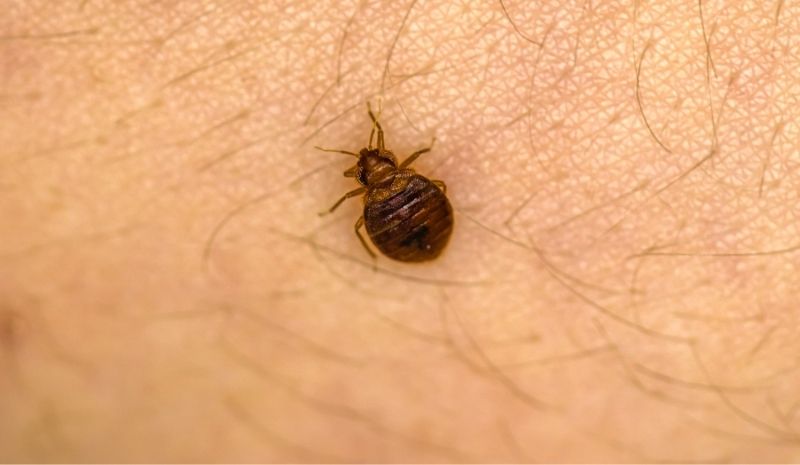
Here are some common symptoms people have when bed bugs bite them. They resemble the symptoms of other insect bites:
- swollen spots with a darker hue in the middle;
- itchiness;
- framed in a rough line or a cluster;
- these insects usually bite the face, neck area, arms, and hands.
What is a cockroach?
A cockroach is a common guest in food-handling areas such as restaurants, warehouses, hospitals, offices, and other buildings. These pests can also enter your home in search of favorable conditions to live and breed. Learn how to understand whether you have a roach or another insect in your house.
Appearance
Roaches have flat and oval-shaped bodies that are oily to the touch. Depending on the temperature of their environment, their bodies can be either cool or warm. The roach’s head is small, covered in a shield-like pronotum. The mouth is pointed down and backward.
These creatures have six long, spiny legs that enable them to run speedily across almost any surface. Males are usually smaller than female specimens, and in some types of roaches, females don’t have wings, while the males feature them.
Habitat
These insects prefer a humid, warm, dark environment, and the majority of types are usually found in tropical and mild climatic zones. They use narrow cracks and crevices as shelter. The pests usually dwell behind refrigerators, under sinks, in dark drawers, and in cabinets. They search for food at night time and consume a wide variety of foods and non-edible stuff.
The pests can feed on various things such as food, clothing, paper, books, and dead insects. This capability enables their survival even in tidy homes.
Lifecycle
The pests have three stages of their lifecycle: An egg, a nymph, and an adult. The female species produce eggs in special dark-colored cases called oothecae. Depending on the roach type, an egg case has nearly 16 — 50 eggs.
After a roach deposits an egg case, a soft white nymph emerges. When their exoskeleton hardens, it gains a brownish coloring. Young cockroach nymphs mature after several times of molting.
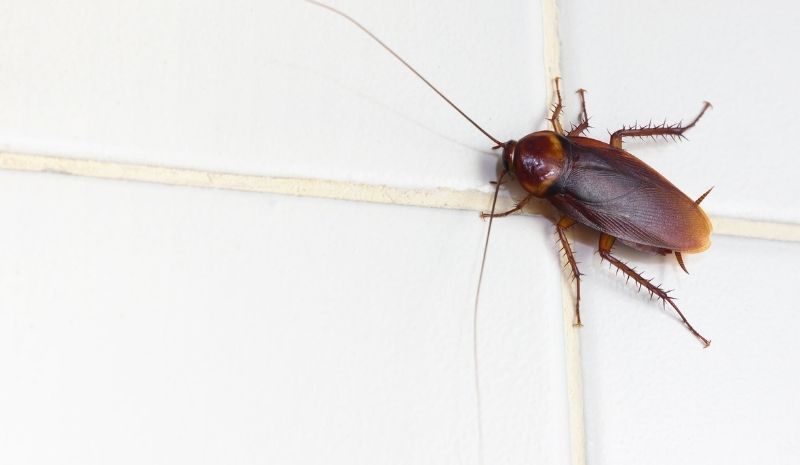
Danger
Regardless of whether you have to deal with a single roach or an entire infestation, seeing this pest doesn’t promise any good. Here are the common dangers they bear:
- roaches secrete a substance that stains surfaces and produces unpleasant odors;
- they can destroy fabric and paper items;
- these pests are known to be dangerous as an asthma trigger and an allergen source;
- they can also transfer certain bacteria on food that can cause various illnesses, among which are staphylococcus, salmonella,
- streptococcus, diarrhea, dysentery, cholera, and typhoid fever.
Differences between them
Now that you’re well aware of the peculiarities of both types of these pests, let’s observe the differences between them. The main distinctions between a tiny cockroach and a bed bug lie in their shape, size, and antennae.
Size
Tine cockroaches are equal in size, but they grow slightly larger than bed bugs during a short period of time. A baby roach is approximately ¼ inch to ½ inches in length. Mature cockroaches are nearly 2 inches long, which is larger than a bed bug.
Shape
Little roaches’ bodies are cylindrical, while bed bugs are oval-shaped, which makes it easy to differentiate these pests.
Antennae
Baby cockroaches’ antennae are nearly as long as their bodies. Meanwhile, bed bugs have relatively short antennae. These antennae do not extend from their body as far as those of cockroaches.
Attitude to humans
Bed bugs feed on human blood, so they bite people. Baby roaches rarely bite humans, only if situations are tough for them. Since cockroaches are extremely viable and omnivorous creatures, they usually have a sufficient amount of food to survive without contacting humans directly. They rarely bite people except for the following cases:
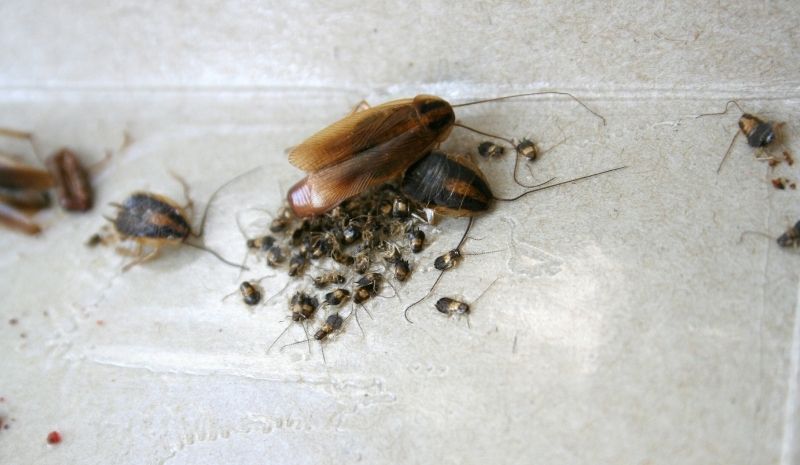
- the infestation is really overwhelming;
- they are short of food;
- a person is dead.
Ease of elimination
You can kill both pests using the same techniques. If you have a combined, roach-and-bed-bug infestation in your home, you can apply one treatment method. The best way to kill these two pests at once is with heat treatment.
- If you wonder which insect is harder to eliminate, specialists usually claim it is a bed bug. These pests don’t fall for anything except for human blood, so they can avoid baits. However, there are bed bug lures and traps you can use to cope with them;
- Roaches are considered easier to kill because they eat regular food. Thus if you place food in traps or poison bait, you can effectively kill them. Glucose bait traps are an example.
You should understand that both species are notoriously difficult to kill, and they can quickly restart an entire infestation. Even two eggs are enough to have your entire home full of roaches again. Thus it is necessary to use preventive measures to avoid this undesirable possibility in the future.
If you live in an apartment, not a separately standing house, the risks only increase. Insects can re-invade your home coming from your neighbor’s door.
Prevention
Applying preventive measures is way easier than dealing with an existing infestation. Depending on the scope of the bug infestation and the type of treatment you use, it might take you several treatment sessions to completely eliminate the insects. Here are some everyday prevention tips you can apply to ensure no bug enters your home:
Bed bugs: To prevent these pests from appearing, you should thoroughly vacuum your suitcases after coming back from a trip. Don’t bring any second-hand furniture, mattresses, and box springs into your house without a previous visual inspection for the signs of bed bugs. If you have pets, carefully examine their sleeping areas to find out whether bed bugs are there.
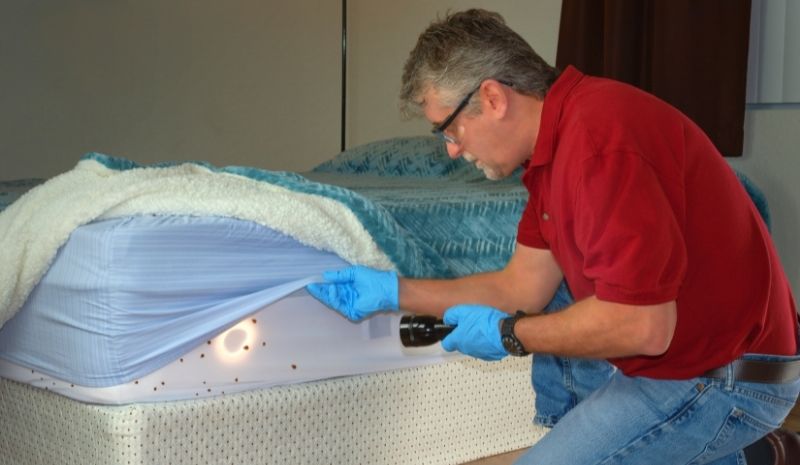
Roaches: The common solutions include elimination of food sources, regular and sufficient cleaning, decluttering your entire house, and sealing all the cracks and crevices in the walls with expanding foam. Regularly check the pipe’s condition and repair them if necessary. If you have a pet, remove its food, water bowl, and litter tray at night.
By keeping your kitchen, food handling, and storage areas clean, you invest in a roach-free future. It’s essential to store cereals and pet food in airtight containers to make your home unattractive to cockroaches.
FAQ About Difference Between Bed Bug and Cockroach
Here are the most common questions people have about these two pests. Read them and the answers provided to understand whether you have seen a cockroach nymph or a bed bug in your house.
Which is worse: roaches or bed bugs?
Both roaches and bed bugs are harmful. It’s difficult to get rid of these pests since they rapidly multiply. However, it’s worse to have bed bugs than roaches as they feed on human blood when a person is asleep.
Do bed bugs look like roaches?
Bed bugs have a more rounded shape than cockroaches. While baby roaches are cylindrical, bed bugs have an oval body. It’s easy to define these insects by looking at their body shape.
Can anything be mistaken for bed bugs?
Since bed bugs are tiny, it makes them somewhat difficult to identify. People often confuse them for bat bugs, spider beetles, booklice, carpet beetles, and flees. Bat bugs resemble them the most, but this species has longer hairs on its head.
Do roaches eat bed bugs?
Yes, roaches eat bed bugs, but they can’t completely reduce their population. The reason is bed bugs multiply faster than cockroaches consume them. Thus you can have a roach & bed bug infestation simultaneously. These pests choose different places as their habitat: Bed bugs prefer bedrooms, and roaches usually settle in kitchens.
Bed Bug or Roach: Peace of Mind Found
I hope this guide has helped you clarify the major differences between these nasty pests, and you won’t feel confused if you find either of them in your home. Identifying the insect correctly is already a step to solving a problem. Examine their appearances, habits, and the usual place where these pests settle, and you will easily determine the pest without a need to address a professional for an inspection.
Do you use any preventive measures to cope with the bug infestation? Where have you found your tiny pest? Please, leave your thoughts in the comments below.
Also read:
- Cockroaches Outside My House at Night: Exorcize Night Guests
- How to Get Rid of Roaches in Walls: Complete Roach Control & Prevention Guide
- How to Get Rid of Roaches in Car: No Passengers Allowed
- How to Keep Cockroaches Away at Night: Your Bed Is Your Fortress
- How to Prevent Cockroaches in Bedroom: Protect Your Sleep
- What Smells Do Cockroaches Hate? Using Aroma as a Weapon
- Does Coffee Have Roaches or Other Insects
References
- Bed bugs (Mary Anne Dunkin Medically Reviewed by Carol DerSarkissian, MD):
https://www.webmd.com/skin-problems-and-treatments/guide/bedbugs-infestation - Cockroach (By The Editors of Encyclopaedia Britannica):
https://www.britannica.com/animal/cockroach-insect
Infestation (Jeffrey Hahn and Mark Ascerno, former Extension entomologists):
https://extension.umn.edu/insects-infest-homes/cockroaches - Prevent these pests (J.L. Gangloff-Kaufmann and C. Pichler, New York State IPM Program, Cornell University):
https://www.miamicountyhealth.net/pdf/bedbugs/1268b5_415860234a9f42e9a6c494db12eaad6b.pdf - Bat bugs (W.S. Cranshaw, M. Camper and F.B. Peairs):
https://extension.colostate.edu/topic-areas/insects/bat-bugs-bed-bugs-and-relatives-5-574/

